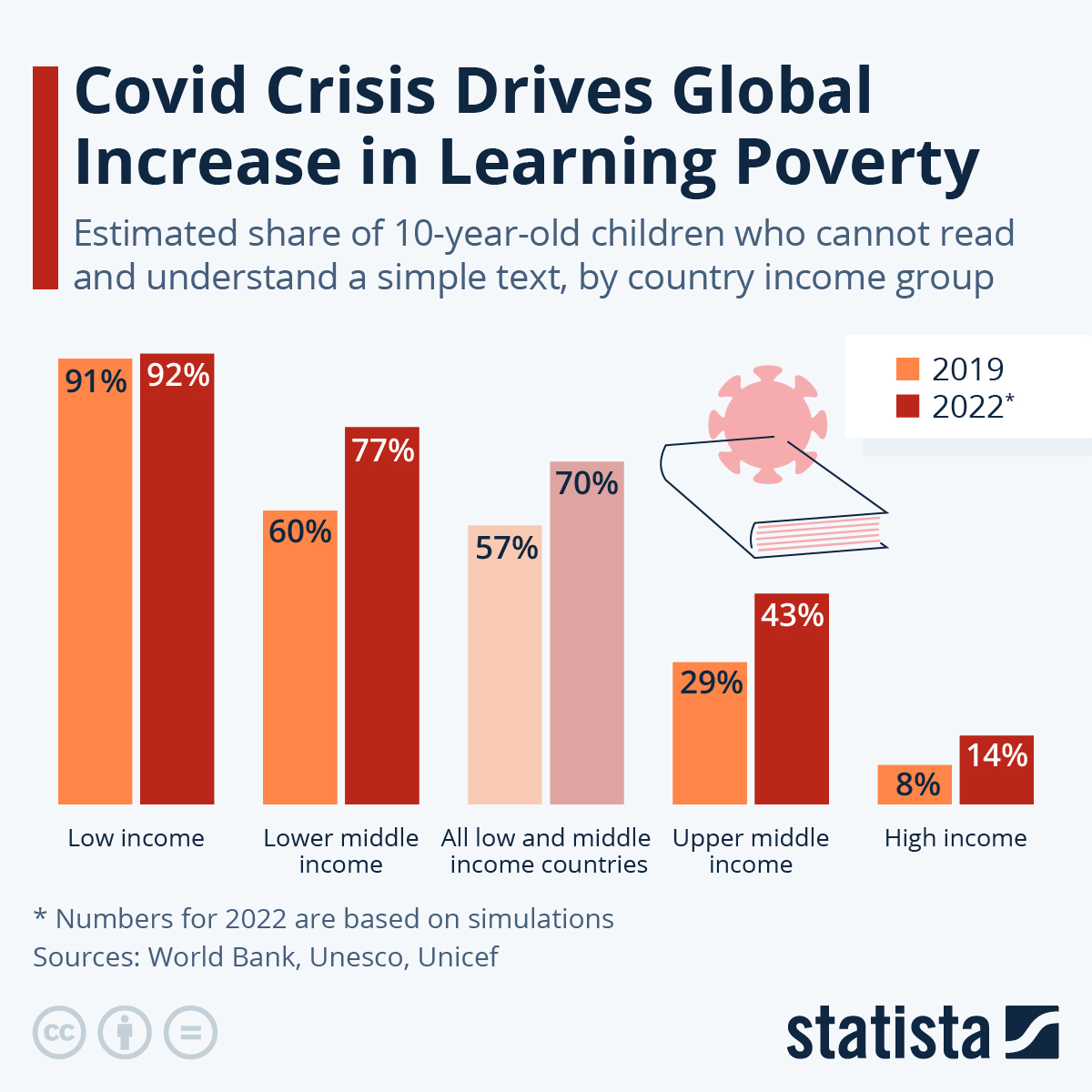
International Literacy Day, celebrated on September 8 each year, is a global observance dedicated to promoting the significance of literacy as a human right and a powerful driver of sustainable development.
Literacy is a key ingredient of personal development and social progress because it empowers people to access education and information, enabling them to make informed decisions and participate fully in society. It also plays a pivotal role in reducing poverty, improving health outcomes and fostering gender equality. International Literacy Day reminds us that literacy is not just a fundamental human right but a catalyst for positive change, both at the individual and societal level.
As Statista's Felix Richter notes, since the day was first observed in 1967, steady progress has been made in the fight against illiteracy, but the issue remains a hindrance to development around the world, with more than 750 million people aged 15 and older estimated to lack basic reading and writing skills in 2020.
Moreover, progress towards a more literate world has hit a huge roadblock in 2020, when Covid-19-based lockdown policies disrupted education systems around the world.
You will find more infographics at Statista
With more than a billion children affected by school closures and hundreds of millions cut off from remote learning programs, global government health officials tyrannical one-size-fits-all response to the pandemic has been an unprecedented shock to global education whose consequences will be felt for years.
"The State of Global Learning Poverty: 2022 Update", a joint publication of the World Bank, UNICEF, FCDO, USAID and the Bill & Melinda Gates Foundation in partnership with UNESCO tries to gauge the extent to which Covid has affected children’s ability to read, coming to the conclusion that the pandemic has made a pre-existing learning crisis even worse. The report finds that the learning poverty rate, i.e. the share of children who cannot read a simple text with comprehension by age 10, has risen across the globe between 2019 and 2022, climbing from 57 to 70 percent in all low- and middle-income countries.
“Even before Covid-19, the world was facing a learning crisis, with nearly 6 out of every 10 ten-year-olds in low- and middle-income countries suffering from learning poverty,” the report finds, calling for urgent action to be taken. “There is a narrow window to act decisively to recover and accelerate learning. The good news is that the core policies that can help recover learning lost to the pandemic will also address the deeper underlying learning crisis that predated Covid-19, accelerating learning and delivering long-term benefits for economies and societies.”
International Literacy Day, celebrated on September 8 each year, is a global observance dedicated to promoting the significance of literacy as a human right and a powerful driver of sustainable development.
Literacy is a key ingredient of personal development and social progress because it empowers people to access education and information, enabling them to make informed decisions and participate fully in society. It also plays a pivotal role in reducing poverty, improving health outcomes and fostering gender equality. International Literacy Day reminds us that literacy is not just a fundamental human right but a catalyst for positive change, both at the individual and societal level.
As Statista’s Felix Richter notes, since the day was first observed in 1967, steady progress has been made in the fight against illiteracy, but the issue remains a hindrance to development around the world, with more than 750 million people aged 15 and older estimated to lack basic reading and writing skills in 2020.
Moreover, progress towards a more literate world has hit a huge roadblock in 2020, when Covid-19-based lockdown policies disrupted education systems around the world.
You will find more infographics at Statista
With more than a billion children affected by school closures and hundreds of millions cut off from remote learning programs, global government health officials tyrannical one-size-fits-all response to the pandemic has been an unprecedented shock to global education whose consequences will be felt for years.
“The State of Global Learning Poverty: 2022 Update”, a joint publication of the World Bank, UNICEF, FCDO, USAID and the Bill & Melinda Gates Foundation in partnership with UNESCO tries to gauge the extent to which Covid has affected children’s ability to read, coming to the conclusion that the pandemic has made a pre-existing learning crisis even worse. The report finds that the learning poverty rate, i.e. the share of children who cannot read a simple text with comprehension by age 10, has risen across the globe between 2019 and 2022, climbing from 57 to 70 percent in all low- and middle-income countries.
“Even before Covid-19, the world was facing a learning crisis, with nearly 6 out of every 10 ten-year-olds in low- and middle-income countries suffering from learning poverty,” the report finds, calling for urgent action to be taken. “There is a narrow window to act decisively to recover and accelerate learning. The good news is that the core policies that can help recover learning lost to the pandemic will also address the deeper underlying learning crisis that predated Covid-19, accelerating learning and delivering long-term benefits for economies and societies.”
Loading…





